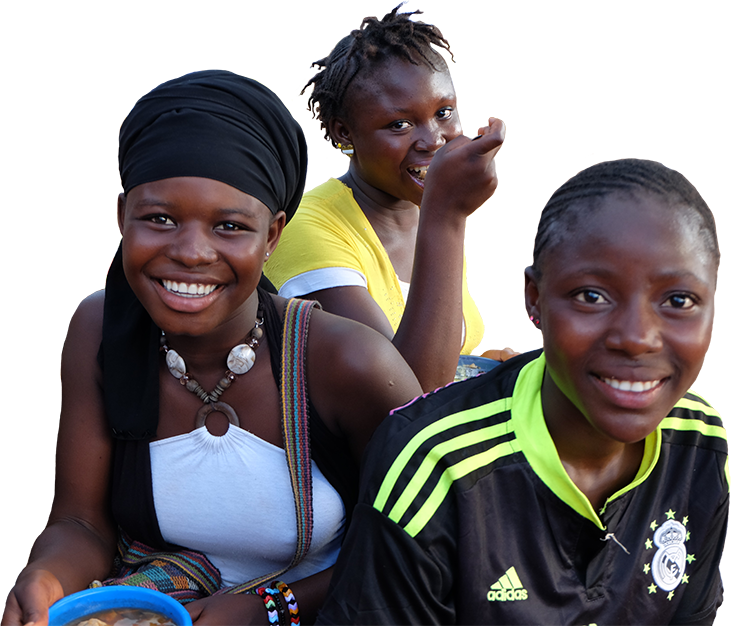Improving adolescent nutrition depends heavily on behaviors such as diet and eating practices, exercise, lifestyle, and use of health services. Social and behavior change (SBC) strategies must consider how unique structural and environmental factors that affect adolescents’ access to services and adoption of priority behaviors. Formative research, concept testing, and pre-testing of materials and approaches are needed to identify barriers and enablers to behavior change and to better understand how adolescents engage with family members, friends, teachers, health care providers, religious leaders, other community members, mass media, and social media. The Adolescent Nutrition Resource Bank includes posters, videos, counseling cards, and other SBC materials. If you have relevant SBC resources, please send them to info@advancingnutrition.org.
We found 111 resource(s)
Menu Planning Game for Improved Dietary Diversity and Increased Frequency of Eating (Tupange Mlo wa Kila Siku na Ktafunwa kwa Vyakula Vyenye Virutubishi Mbalimbali)
Training Material published by Save the Children in
This resource was developed under the USAID-funded Lishe Endelevu Activity for a Social and Behavior Change Communication project, which targeted girls 15–19 in Tanzania. Materials were adapted from Growth Through Nutrition (Ethiopia). Resources include a a Swahili language training guide, posters, and games aimed at improving nutritional…
Adolescent Nutrition Teachers' Guide (Kuhamasisha Lishe ya Vijana Balehe kwa Kutumia Zana za Mawasiliano ya Mabadiliko ya Tabia Katika Jamii)
Training Material published by Save the Children in
This resource was developed under the USAID-funded Lishe Endelevu Activity for a Social and Behavior Change Communication project, which targeted girls 15–19 in Tanzania. Materials were adapted from Growth Through Nutrition (Ethiopia). Resources include a Swahili language training guide, posters, and games aimed at improving nutritional awareness…
Raising the Profile of Adolescent Nutrition in Pakistan: Learnings on the Journey from Policy to Action
Guideline/Guidance published by GAIN in
This working paper describes lessons learned throughout the development of the Pakistan Adolescent Nutrition Strategy (PANS). The paper utilizes the Innocenti Framework on Food Systems for Children and Adolescents to guide the implementation of PANS and to understand the determinants of adolescent nutrition, specifically trends in consumption,…
Factors influencing obesogenic behaviours of adolescent girls and women in low- and middle-income countries: A qualitative evidence synthesis
Literature Review published by Academic Journal in
This systematic review synthesized the qualitative evidence from the peer-reviewed literature on factors influencing obesogenic behaviours in adolescent girls (age 10-19) and women of reproductive age (15-49 years of age) in low- and middle-income countries (LMICs). The review included 71 studies from 27 different countries; about half of the…
Sex- and Gender-Based Analysis (SGBA): A Toolkit for Nutrition Programs
Guideline/Guidance published by Nutrition International in
This toolkit is intended to guide the development and implementation of sex- and gender-based analysis (SBGA) within nutrition programs. It is based on the premise that women's empowerment and improved nutrition are mutually reinforcing and that addressing underlying gendered barriers and constraints will improve nutritional outcomes in…
Family influences on health and nutrition practices of pregnant adolescents in Bangladesh
Journal Article published by Academic Journal in
This resource includes a brief summarizing key findings from qualitative research with pregnant adolescents in Bangladesh focused on prenatal care and nutrition practices, as well as a peer-reviewed publication based on the in-depth interviews. Interviews were conducted by trained peer interviewers with pregnant adolescents, adolescent mothers,…
Nutrition for Adolescent Health During COVID-19 (Toolkit)
Information, Education and Communication Materials published by WHO in
This toolkit contains several types of resources: advocacy and key messages, multimedia assets, guidance, and contextualised resources. Resources include infographics with nutrition tips, recommendations and strategies for healthy eating from FAO, WHO, and other sources, reports on the status of food security and nutrition, and guidance for school…
Determination of an Acceptable Portion Size of Daal for a Bangladeshi Community-Based Iron Intervention in Adolescent Girls: A Feasibility Study
Journal Article published by Academic Journal in
This feasability study aimed to determine an acceptable portion size of iron-fortified lentils (daal) among adolescent girls in rural Bangladesh. The results of this community-based non-randomized crossover feeding trial indicate that 37.5 g of raw lentils in a thick cooking preparation using a local recipe was most acceptable. These results may…



